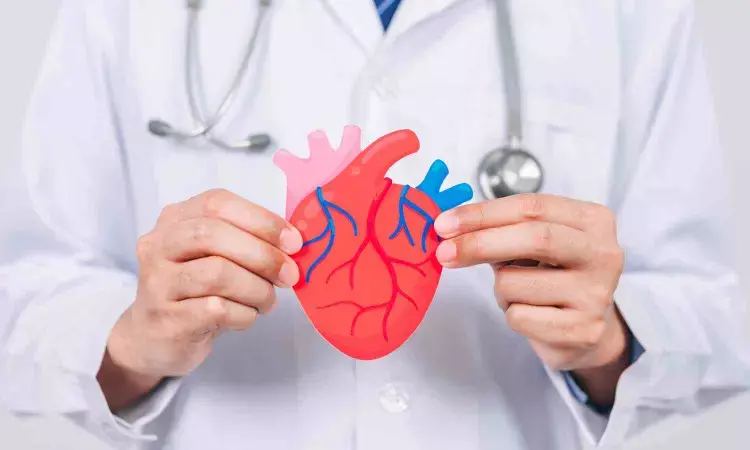- Home
- Medical news & Guidelines
- Anesthesiology
- Cardiology and CTVS
- Critical Care
- Dentistry
- Dermatology
- Diabetes and Endocrinology
- ENT
- Gastroenterology
- Medicine
- Nephrology
- Neurology
- Obstretics-Gynaecology
- Oncology
- Ophthalmology
- Orthopaedics
- Pediatrics-Neonatology
- Psychiatry
- Pulmonology
- Radiology
- Surgery
- Urology
- Laboratory Medicine
- Diet
- Nursing
- Paramedical
- Physiotherapy
- Health news
- Fact Check
- Bone Health Fact Check
- Brain Health Fact Check
- Cancer Related Fact Check
- Child Care Fact Check
- Dental and oral health fact check
- Diabetes and metabolic health fact check
- Diet and Nutrition Fact Check
- Eye and ENT Care Fact Check
- Fitness fact check
- Gut health fact check
- Heart health fact check
- Kidney health fact check
- Medical education fact check
- Men's health fact check
- Respiratory fact check
- Skin and hair care fact check
- Vaccine and Immunization fact check
- Women's health fact check
- AYUSH
- State News
- Andaman and Nicobar Islands
- Andhra Pradesh
- Arunachal Pradesh
- Assam
- Bihar
- Chandigarh
- Chattisgarh
- Dadra and Nagar Haveli
- Daman and Diu
- Delhi
- Goa
- Gujarat
- Haryana
- Himachal Pradesh
- Jammu & Kashmir
- Jharkhand
- Karnataka
- Kerala
- Ladakh
- Lakshadweep
- Madhya Pradesh
- Maharashtra
- Manipur
- Meghalaya
- Mizoram
- Nagaland
- Odisha
- Puducherry
- Punjab
- Rajasthan
- Sikkim
- Tamil Nadu
- Telangana
- Tripura
- Uttar Pradesh
- Uttrakhand
- West Bengal
- Medical Education
- Industry
No Added Benefit of Immediate Angiography among individuals resuscitated from Cardiac Arrest Without ST-Elevation: JAMA

A new study published in the Journal of American Medical Association showed no advantage to immediate coronary angiography compared to a delayed or selective approach in patients successfully resuscitated from out-of-hospital cardiac arrest (OHCA) without ST-segment elevation. No patient subgroup showed a differing treatment response.
There was no difference in short-term survival between immediate and delayed coronary angiography in patients with out-of-hospital cardiac arrest (OHCA) who did not have ST-segment abnormalities, according to a number of randomized clinical trials (RCTs). It is yet unknown, though, how these tactics relate to long-term results and which patient subgroups could profit from customized treatment.
Thus, to determine the impact of immediate versus delayed or selective coronary angiography treatment strategies on 1-year survival for patients with OHCA without ST elevation, as well as to identify subgroups that may have different treatment outcomes depending on patient or clinical characteristics, this study was carried out.
From the beginning until September 8, 2022, Embase, Ovid MEDLINE, and Clarivate/Web of Science Core Collection were searched for pertinent material. RCTs with a minimum follow-up time of one year that examined immediate vs delayed or selective coronary angiography following OHCA without ST-segment elevations were included.
The one-stage individual participant data meta-analysis (IPDMA) method was used to aggregate the data. COACT (Coronary Angiography After Cardiac Arrest) and TOMAHAWK (Immediate Unselected Coronary Angiography vs. Delayed Triage in Survivors of Out-of-Hospital Cardiac Arrest Without ST-Segment Elevation) were two RCTs that satisfied the eligibility requirements and provided individual patient data.
One-year survival was the main outcome. Secondary outcomes included clinical outcomes (e.g., myocardial infarction and heart failure) at 1 year and the identification of differences in treatment effect using subgroup analysis (based on age, sex, witnessed arrest, arrest rhythm, time to return of spontaneous circulation, time to basic life support, and history of coronary artery disease, diabetes, and hypertension).
Data for the IPDMA came from two RCTs with 1031 patients in total. Stratified by randomized trial, 259 of 522 (49.6%) in the immediate angiography group and 272 of 509 (53.4%) in the delayed or selective angiography group lived for a year (hazard ratio: 1.15 [95% CI: 0.96-1.37]). There were no treatment-by-subgroup interactions that indicated heterogeneity between the two groups (interaction P values varied from P =.26 to P =.91 among subgroups).
Overall, when comparing urgent coronary angiography to a delayed or selective approach during a one-year follow-up in successfully resuscitated patients with OHCA who did not have ST-segment abnormalities, an IPDMA of two RCTs found no advantages.
Source:
Spoormans, E. M., Thevathasan, T., van Royen, N., Zwinderman, A. H., Freund, A., Thiele, H., Ziesemer, K., Desch, S., Lemkes, J. S., & COACT and TOMAHAWK Trials Investigators. (2025). One-year outcomes of coronary angiography after out-of-Hospital Cardiac Arrest Without ST elevation: An individual patient data meta-analysis. JAMA Cardiology. https://doi.org/10.1001/jamacardio.2025.1194
Dr Prem Aggarwal, (MD Medicine, DNB Medicine, DNB Cardiology) is a Cardiologist by profession and also the Co-founder and Chairman of Medical Dialogues. He focuses on news and perspectives about cardiology, and medicine related developments at Medical Dialogues. He can be reached out at drprem@medicaldialogues.in


